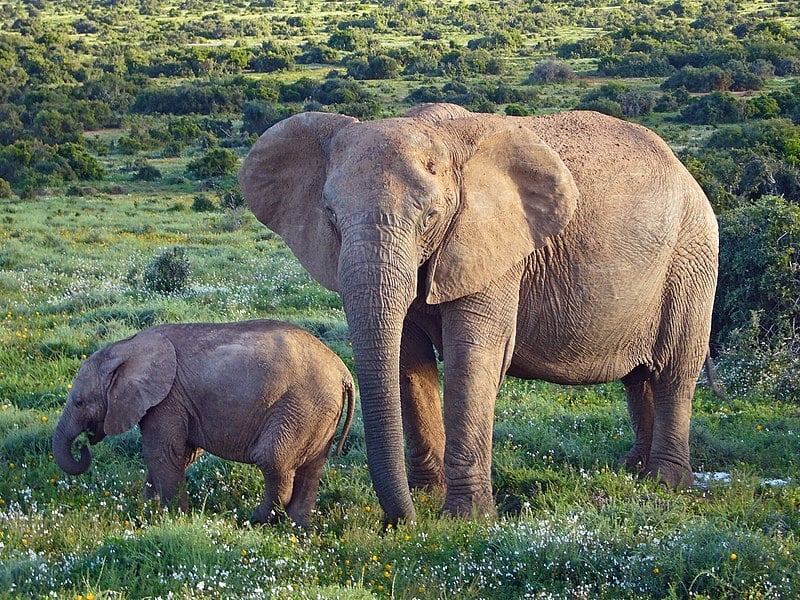What are Endangered Species?
Thousands of plants and animals around the world are considered to be endangered species. A species is endangered when its population has become so small that it’s at risk of fully disappearing from the earth, or going extinct. When an animal population decreases enough that it becomes endangered, the genetic variation in that population also decreases, putting animals at greater risk of disease and genetic mutation. The main reasons species become endangered are habitat loss, climate change, poaching, and invasive species. Let’s take a look at some of the problems that come with population loss and what can be done to protect endangered species.
Watch the full video from FuseSchool here
Climate change and habitat loss are threats that have existed for millions of years, but the rapid expansion of humans into remote areas and the burning of fossil fuels have dramatically increased the risk to thousands of species. In 1964, the ICUN Red List of Threatened Species was founded to track the status of endangered and threatened species worldwide. Two years later, in 1966, the United States government introduced the Endangered Species Preservation Act, which created a federal list of endangered species in the country and made it illegal to harm species on that list. A few years later, that act was repealed and replaced with the updated Endangered Species Act of 1973. Let’s check in with the Business Professor to help us define the legal difference between a threatened species and an endangered one:
Watch the full video from The Business Professor here
Which Species are Endangered?
Thousands of plant and animal species around the world are critically endangered, endangered, or seriously threatened. Unfortunately, we don’t have time to cover all of the endangered species here, but let’s look at a few examples of endangered species and the efforts that are being made to preserve them.
Tasmanian Devil
The Tasmanian Devil is a carnivorous marsupial known for its ferocious bite and signature screech. This scavenger used to roam all over mainland Australia but went extinct there about 3,500 years ago. Today, Tasmanian Devils can be found in the wild only on the Island of Tasmania, off the southern coast of Australia, and their numbers are dwindling. A contagious cancer has been infecting and killing Tasmanian Devil populations. Luckily, conservation groups are working to preserve and expand populations to avoid extinction.
Watch the full video from Brave Wilderness here
Elephants
Elephants are the largest living land mammals in the world. They can be found in a variety of habitats throughout sub-Saharan Africa, South Asia, and Southeast Asia. These large, herbivorous animals eat up to 660 pounds (300kg) of food a day and drink about 11 gallons (40 liters) of water. Elephants need a lot of space to forage for that much food. Habitat loss from deforestation, logging, and other human activities, as well as poaching for their valuable ivory tusks, has significantly reduced the elephant population over the last century. African bush elephants and Asian elephants are both endangered, while the African forest elephant is critically endangered.
Watch the full video from Knowledge - Animal Society here
White Haired Golden Rod
The Land of Arches in Kentucky’s Red River Gorge is full of beautiful sandstone arches and a whole lot of plant and animal species, including the White Haired Golden Rod. This delicate plant hasn’t been found anywhere else in the world! The unique landscape of the Red River Gorge was formed during the Ice Age some 20,000 years ago. As all that ice melted, the lush valleys became a fertile environment for all kinds of plants and animals, many of which can still be found in the area today. The Land of Arches wasn’t a popular tourist destination until the early 2000s, when the breathtaking views and excellent rock climbing terrain started attracting tons of new visitors. This increase in activity has damaged a lot of the flora in the area and pushed the delicate, White Haired Golden Rod onto the endangered species list.
Watch the full video from Overview here
To learn even more about endangered species, check out the videos on our Endangered and Threatened Species playlist
Nora Kane
Senior Editing and Partnerships Associate Nora has a background in media production with a focus in education and language learning. She currently works on the Boclips Content Team where she edits videos, manages content partner relationships, and sometimes makes playlists.
- #Classroom
- #Video in Digital Learning
- #Educational Videos
- #Tips for Using Video
- #Video Content Partners
- #Boclips for Publishers
- #Issues in Education
- #Educational Videos by Subject Area
- #News and Announcements
- #Events & Holidays
- #Video and Teaching Tools
- #Teaching Methodologies
- #Education Videos
- #Video and Digital Literacy
- #Short Educational Videos
- #Instructional Design
- #Multimodal Learning
- #Video and Student Safety
- #Accessibility in Education
-3.png?width=390&height=223&name=Untitled%20design%20(2)-3.png)


.png?width=1152&height=660&name=Copy%20of%20Untitled%20Design%20(1).png)



